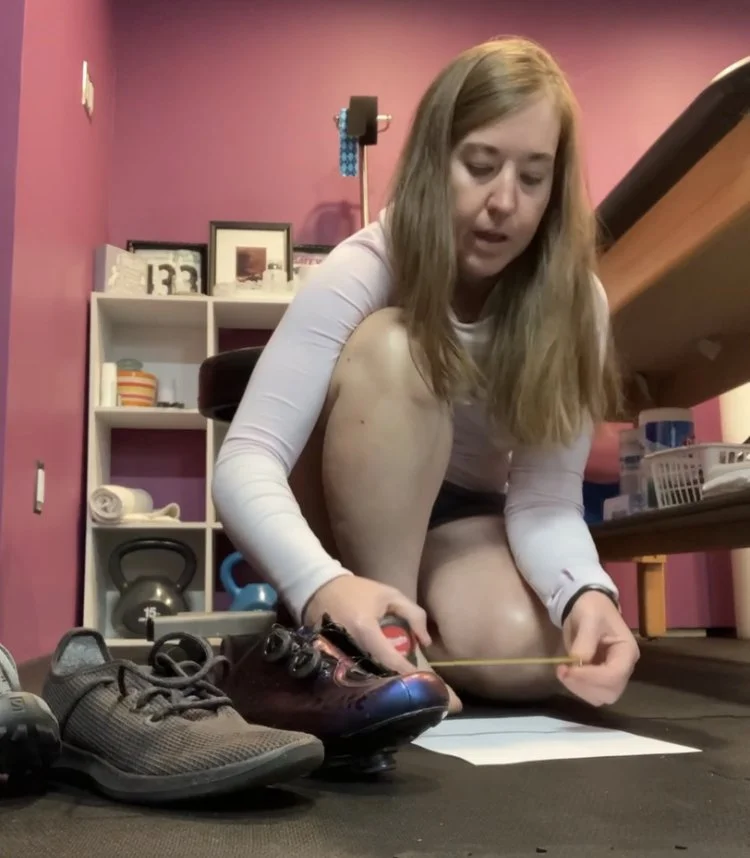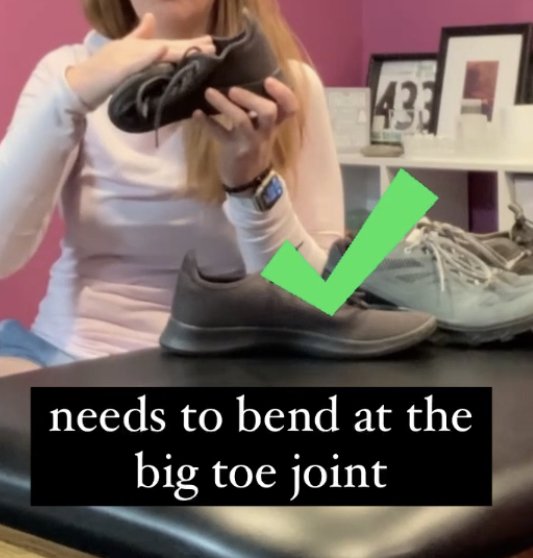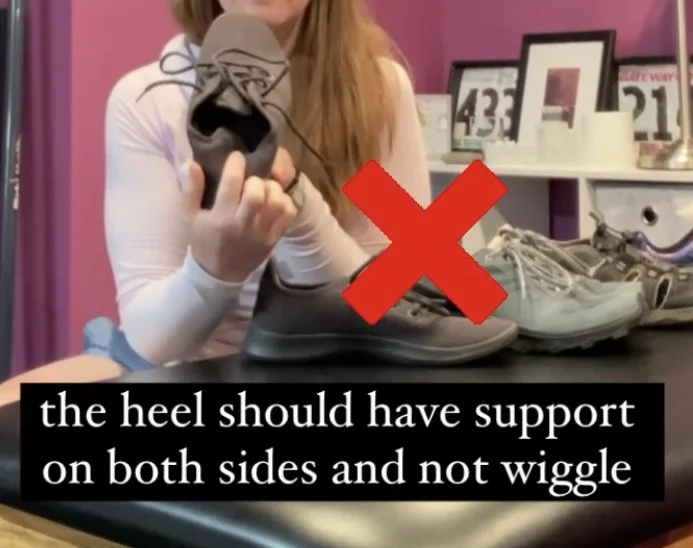Selecting proper footwear for function and fitness
The feet are the foundation on which we stand. Supporting our bony and soft tissue structure should be a priority.
Did you know?
There are 26 bones in the foot and ankle
There are 33 joints in the foot and ankle all meant to articulate and move upon one another
There are 107 ligaments in the foot
The way your big toe moves affects your stride and spinal rotation
Let’s discuss these facts quickly to lay a foundation on the guidance we will provide later for selecting proper footwear:
Those 26 bones and 33 joints are all made to bend and move upon one another. When you stiffen one portion (because your big toe has become a bunion or you add a hard and rigid insole), another part of your body will pay the price due to compensatory strategies. Your arch was made to support your hip and knee structure and alignment. You have over 100 ligaments, tendons and muscles that help support the integrity of your arch and the ability for you to spread your toes for increased base fo support (balance). When your arch drops, it will increase pressure on the inside of your knee joint and your lateral hip. Do you have inner knee pain or outer hip pain? If so, check your arch. We can provide exercises to help correct the way your arch bone drops, provide wedging, taping techniques or custom molded insoles. If this sounds complicated, schedule an appointment for an assessment.
There are a few changes that have occurred throughout the years in the foot industry that have played an impact on types of injuries and structural changes we se in the clinic. Due to the increased average BMI (obesity), the shoe manufactures went from a narrow heel last to a medium. This may be a culprit for why your heel slips as you walk. Good news, there’s a lacing technique, heel lock, that can correct this for you (we will add photos of options in an upcoming blog). A better fitting shoe option may also provide some help. I always provide shoe recommendations for my patients and revisit the shoe stores annually to maintain current shoe lists.
We will discuss a few issues with the way shoes are manufactured that should help equip you for your next purchase:
Problem 1: Shoe manufactures have gone to a more narrow toe box (ball of foot) that is a culprit for many bunions, hot spots and poor movement of the first toe joint. If you stencil your foot and measure your toe box, your shoe should have a minimum of an extra 5 mm toe box width so that your toes can spread to better support you.
Problem 2: A majority of shoes do not bend at the big toe joint. You want the shoe to bend at the metatarsal phalangeal (MTP) joint. When you are selecting shoes, you should try to bend the shoe forcefully to see if the shoe bends at the joint or in the middle of the toe bone (where your body cannot bend). If the shoe doesn’t bend, you will have what we call a medial heel whip which will affect the swing phase of the gait. A medial heel whip can lead to tightening of your lateral lower leg tissue. This tissue runs congruently with the lateral fascial tissue and can be a culprit for the infamous, IT band syndrome (iliotibial band), and femoral lateral cutaneous nerve irritation.
Problem 3: Another issue I commonly see in the clinic is a lack of support from the shoe at the back of the heel. This is not a deal breaker for everyone, but if your joints have been described as hyper mobile or lax/ loose this is important. This is also important if you have experience chronic ankle sprains. When you push on the back of the shoe, at the heel, it should not wiggle side to side in order to provided your body additional support.
My patients can tell you I have plenty of exercises, stick mobility facial stretching, shoe lacing techniques, wedging, taping and foot insole tricks up my sleeves to help you find the perfect shoe and support for your body. If you are looking for guidance, please reach out and do not suffer in silence. We can easily schedule a consultation in person or virtually to provide individualized recommendations and guidance.
So as we move out of sandal season and into pumpkin spice and all things nice, make sure you find proper support for the foundation on which you move.
You should always consult your healthcare practitioner(s) for medical advise and what is best for your care. The purpose of this blog is to centralize and share information while connecting with others.





